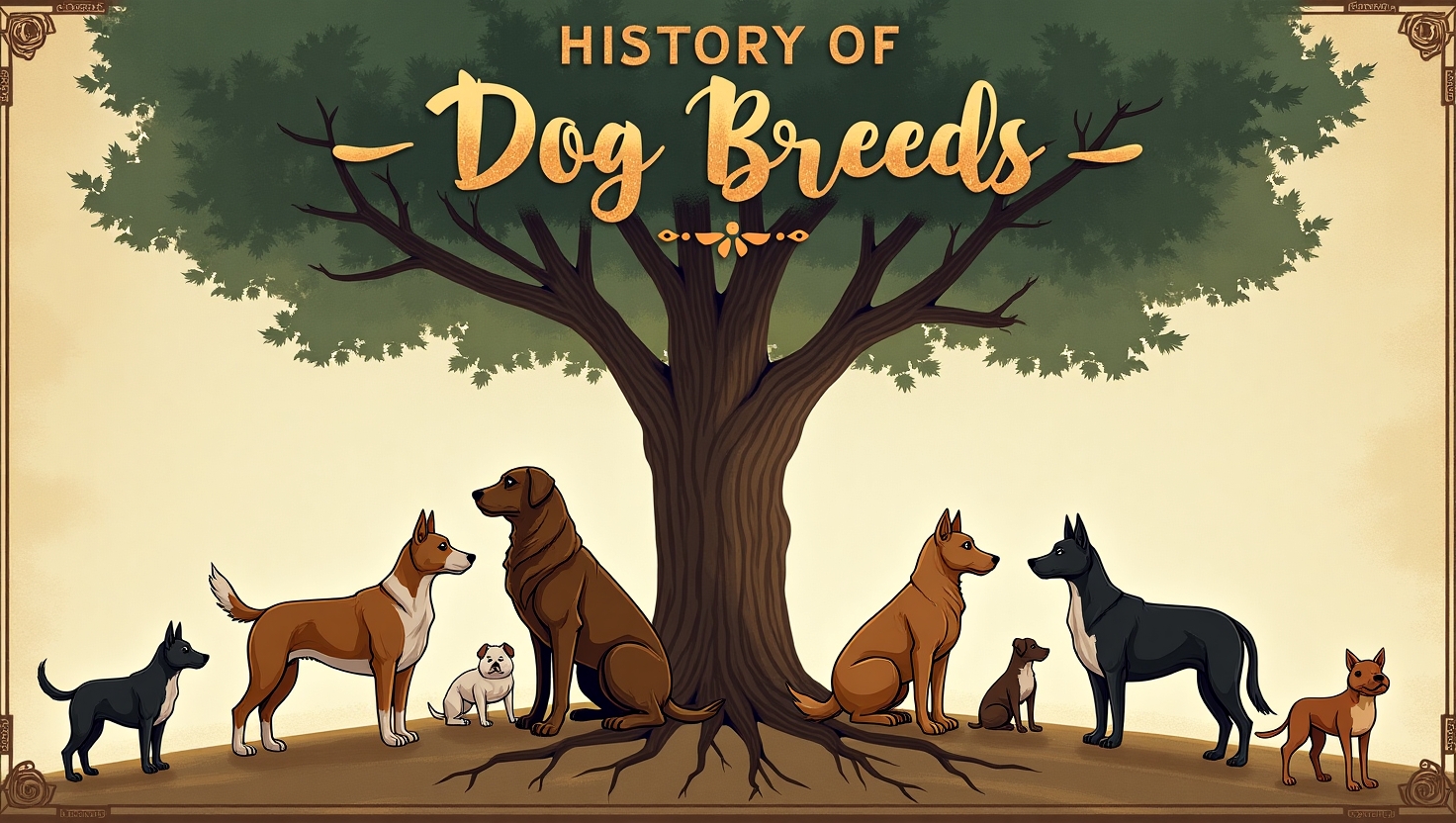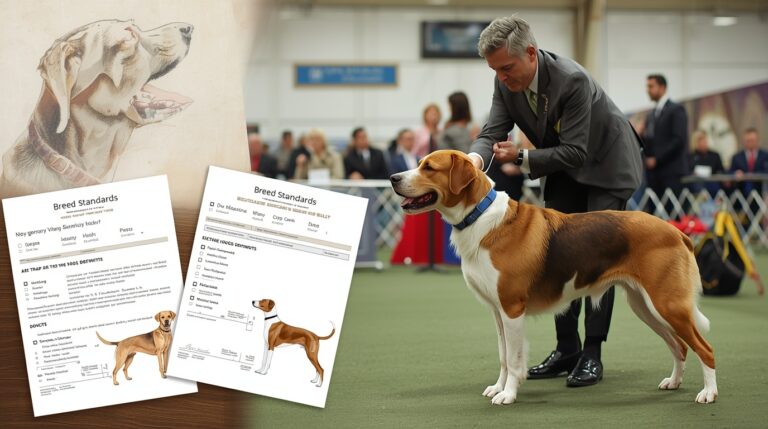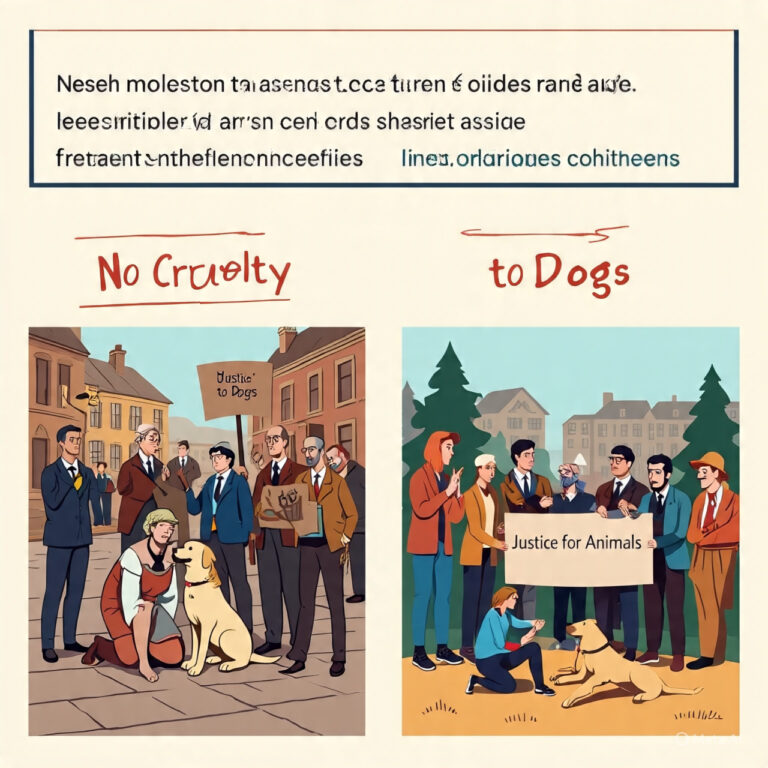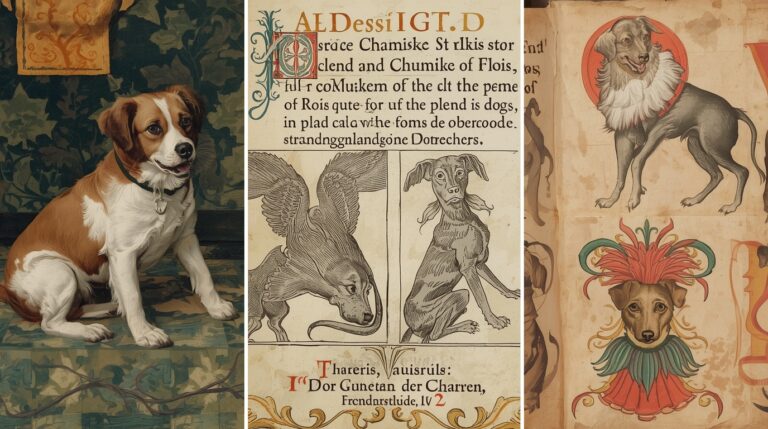The History of Dog Breeds

Introduction to the History of Dog Breeds
The history of dog breeds is a rich and complex journey that mirrors the evolution of human society. From ancient wolf domestication to the rise of over 340 modern dog breeds, dogs have transitioned from wild pack hunters to loyal companions and specialized workers. This transformation spans thousands of years, shaped by genetic selection, cultural traditions, and geographical adaptation.
The Origins of Domesticated Dogs
From Wolves to Dogs: Genetic and Behavioral Shifts
Modern dogs evolved from Canis lupus—the gray wolf. Archaeological and genetic evidence suggests domestication began between 20,000 to 40,000 years ago. Early humans selectively favored wolves that showed tamer temperaments, eventually giving rise to Canis lupus familiaris.
Canis lupus familiaris and Early Human Settlements
The first domesticated dogs coexisted with hunter-gatherer groups, assisting in hunting, guarding, and social bonding. Dog remains found at prehistoric sites in Germany, Siberia, and the Middle East confirm their role in early human communities.
The First Known Dog Breeds
Ancient Mesopotamian Dogs
Clay tablets from Mesopotamia (circa 4000 BCE) depict dogs used for guarding, herding, and military support. These early breeds resembled Mastiffs in size and strength.
The Saluki: Oldest Recognized Breed
The Saluki, one of the oldest known breeds, dates back over 5,000 years and appears in Egyptian tombs. Revered for its speed and elegance, the Saluki was used in desert hunting across the Middle East.
Dogs in Ancient Egypt and Beyond
Symbolism and Use of Dogs in Ancient Cultures
In Ancient Egypt, dogs symbolized protection, loyalty, and guidance. Breeds resembling Basenjis and Greyhounds are frequently found in hieroglyphic art.
Hieroglyphs and Tomb Inscriptions Featuring Dogs
Dogs were sometimes buried with their owners, and their names were inscribed in tombs, proving their cultural and emotional importance.
Dogs of the Classical World
Roman and Greek Breeding Practices
The Greeks bred large, powerful dogs called Molossus, used for warfare, protection, and big-game hunting. Romans adopted and expanded this breeding, using dogs in military campaigns and gladiatorial arenas.
The Molossus: Ancestral Line to Modern Mastiffs
The Molossus is believed to be the ancestor of several modern working breeds, including the Mastiff, Rottweiler, and Saint Bernard.
Medieval Period and Working Breeds
Role of Dogs in Feudal Societies
In medieval Europe, dogs were bred for utility. They guarded castles, herded livestock, and hunted game. Dogs became indispensable assets for lords, knights, and peasants alike.
Hunting Hounds, Shepherds, and Watchdogs
Notable breeds developed during this era include the Bloodhound, Irish Wolfhound, and Great Pyrenees, each tailored to perform specific rural tasks.
The Rise of Specialized Breeding in Asia
Chow Chow and Pekingese in Imperial China
Imperial Chinese dynasties bred unique dogs like the Chow Chow, known for its lion-like appearance, and the Pekingese, a sacred companion of the royal court.
Japanese Breeds: Akita and Shiba Inu
In Japan, dogs such as the Akita Inu and Shiba Inu were bred for hunting, guarding, and devotion, with a legacy preserved in Shinto rituals and folklore.
European Influence on Breed Diversification
Early Breed Registries in Britain
The formalization of dog breeds began in 19th-century Britain with the rise of kennel clubs and the establishment of breed standards.
The Role of Aristocracy in Breed Development
British nobles bred dogs like the Beagle, English Setter, and Foxhound for fox hunting and sporting competitions.
Victorian Era and the Emergence of Dog Shows
Creation of The Kennel Club in the UK
Founded in 1873, The Kennel Club was the first organization to maintain official breed registries, and it played a key role in popularizing dog shows.
Breed Standards and the Birth of Modern Breeding
Breed standards were set based on appearance, behavior, and function, laying the foundation for conformation competitions.
Scientific Approach to Breeding
Mendelian Genetics and Coat Colors
Breeders began applying Mendel’s laws to manipulate coat color, size, and behavioral traits, introducing more control over genetic outcomes.
Eugenics and Its Role in Early Breeding Philosophy
Influenced by eugenics, early 20th-century breeding often emphasized purity over health, which led to hereditary health issues in some breeds.
Working Breeds and Functional Roles
Herding Dogs: Border Collie and Australian Shepherd
Border Collies were bred for precision herding and intelligence, while the Australian Shepherd, developed in the U.S., became popular for ranch work.
Scent Hounds and Detection Dogs
Dogs like the Beagle, Basset Hound, and Bloodhound were developed for tracking scents—skills still used in search-and-rescue and law enforcement.
12. Toy Breeds and Royal Preferences
The Cavalier King Charles Spaniel
A royal favorite in Stuart England, this breed was bred for lap companionship and elegant aesthetics.
Pomeranians and Queen Victoria
Queen Victoria’s preference for small dogs influenced the miniaturization of the Pomeranian, fueling a trend in toy breeds.
Guard and War Dogs in the 20th Century
German Shepherds in WWI and WWII
The German Shepherd became a key military working dog, used for scouting, guarding, and message delivery.
Dobermans as Military Working Dogs
Doberman Pinschers served in the U.S. Marine Corps during WWII, especially in the Pacific theater.
Post-War Pet Ownership Boom
Suburbanization and Rise of Companion Breeds
After WWII, dogs transitioned into household companions. Breeds like the Labrador Retriever and Golden Retriever became American family favorites.
Popularity of Golden Retrievers and Labradors
These breeds ranked among the top AKC-registered dogs for decades, praised for trainability and gentle temperament.
Formation of Modern Kennel Clubs
American Kennel Club (AKC) and International Recognition
Founded in 1884, the AKC now registers over 200 breeds, setting the standard for conformation shows in the United States.
Fédération Cynologique Internationale (FCI)
The FCI, established in 1911, standardizes dog breed criteria across more than 90 member countries.
The Genetic Mapping of Dog Breeds
DNA Testing and Breed Lineages
Modern DNA tests like Embark and Wisdom Panel can trace a dog’s ancestry, identify genetic diseases, and verify breed percentages.
Discovering Ancient vs. Modern Breed Divergence
Geneticists have confirmed that breeds like the Basenji and Afghan Hound are more genetically ancient than many 20th-century creations.
The Role of Selective Breeding
Health Consequences in Purebred Populations
Selective breeding for aesthetics has led to health issues like hip dysplasia, brachycephalic syndrome, and eye defects in breeds such as Bulldogs and Pugs.
The Rise of Designer Dogs (e.g., Labradoodles)
Crossbreeds like the Labradoodle aim to merge hypoallergenic coats with friendly temperaments, offering a healthier alternative to purebreds.
Crossbreeding and Ethical Debates
Breed Purity vs. Health Optimization
Purebred enthusiasts often argue that maintaining breed standards preserves historical integrity. However, many veterinarians and geneticists advocate for controlled crossbreeding to reduce inherited disorders and improve overall health.
Doodles, Puggles, and Hybrid Trends
Designer dogs like the Goldendoodle, Puggle, and Cavachon are bred for temperament, appearance, or allergy-friendly traits. However, unregulated crossbreeding has led to debates on quality control and genetic unpredictability.
Cultural Representation of Breeds
Dogs in Literature and Film
Iconic dogs like Lassie (Collie), Toto (Cairn Terrier), and Hachiko (Akita) have been immortalized in books and movies, symbolizing loyalty, faithfulness, and bravery.
Symbolism in Art and Religion
Throughout history, dogs have represented guardianship in Greek mythology, loyalty in Chinese folklore, and protection in Christian iconography.
Breed Popularity Through the Decades
AKC Rankings from 1950 to Present
The Beagle dominated American homes in the 1950s. From the 1990s onward, Labrador Retrievers consistently topped AKC popularity charts. Recently, French Bulldogs have surged due to their compact size and city-friendly traits.
Global Trends in Breed Preference
Different countries favor unique breeds: Shiba Inu in Japan, Boxers in Germany, Cane Corso in Italy, and Labradors worldwide for their versatility.
Dogs and National Identity
Breeds That Represent Countries
Some breeds are tied to national pride. Examples include the Irish Wolfhound (Ireland), Dogo Argentino (Argentina), Akita Inu (Japan), and Caucasian Shepherd (Georgia). These breeds are often considered cultural heritage assets.
National Recognition and Protection Laws
Many nations have instituted legislation to protect native breeds, including subsidies, breed conservation programs, and export restrictions.
Modern Dog Breeds vs. Ancestral Functions
Loss of Function in Toy and Companion Breeds
Breeds like the Yorkshire Terrier, originally bred to hunt rodents, are now primarily companion dogs, far removed from their working past.
Breed Revitalization Programs
Some groups are working to retrain or repurpose ancient breeds for modern utility—such as herding trials for Collies or search-and-rescue programs using Spaniels.
The Future of Dog Breeds
CRISPR and Genetic Modification in Canines
Emerging tools like CRISPR may allow for the removal of disease-causing genes, sparking both hope and ethical concerns regarding the manipulation of canine genomes.
Breed Preservation Efforts
Organizations like the Livestock Conservancy and Rare Breeds Survival Trust aim to protect endangered breeds like the Otterhound, Skye Terrier, and Canaan Dog.
Adoption vs. Purebred Ownership
Rescue Trends and Breed-Specific Shelters
A growing number of dog owners are choosing adoption over purchase, often rescuing mixed breeds or dogs from breed-specific rescues.
Ethical Breeding and Pet Ownership Choices
Ethical breeders prioritize health, temperament, and genetic diversity. Responsible ownership involves spaying/neutering, training, and providing lifelong care.
Conclusion: What History Teaches Us About Dogs
The history of dog breeds is a reflection of human society—our migrations, our needs, and even our mistakes. Understanding this evolution not only enriches our connection with dogs but also encourages more ethical, sustainable, and compassionate practices for the future.
From the wolf pack to the living room, dogs have walked beside us through every major chapter in civilization. Their story is our story—and the next chapter is ours to write.





